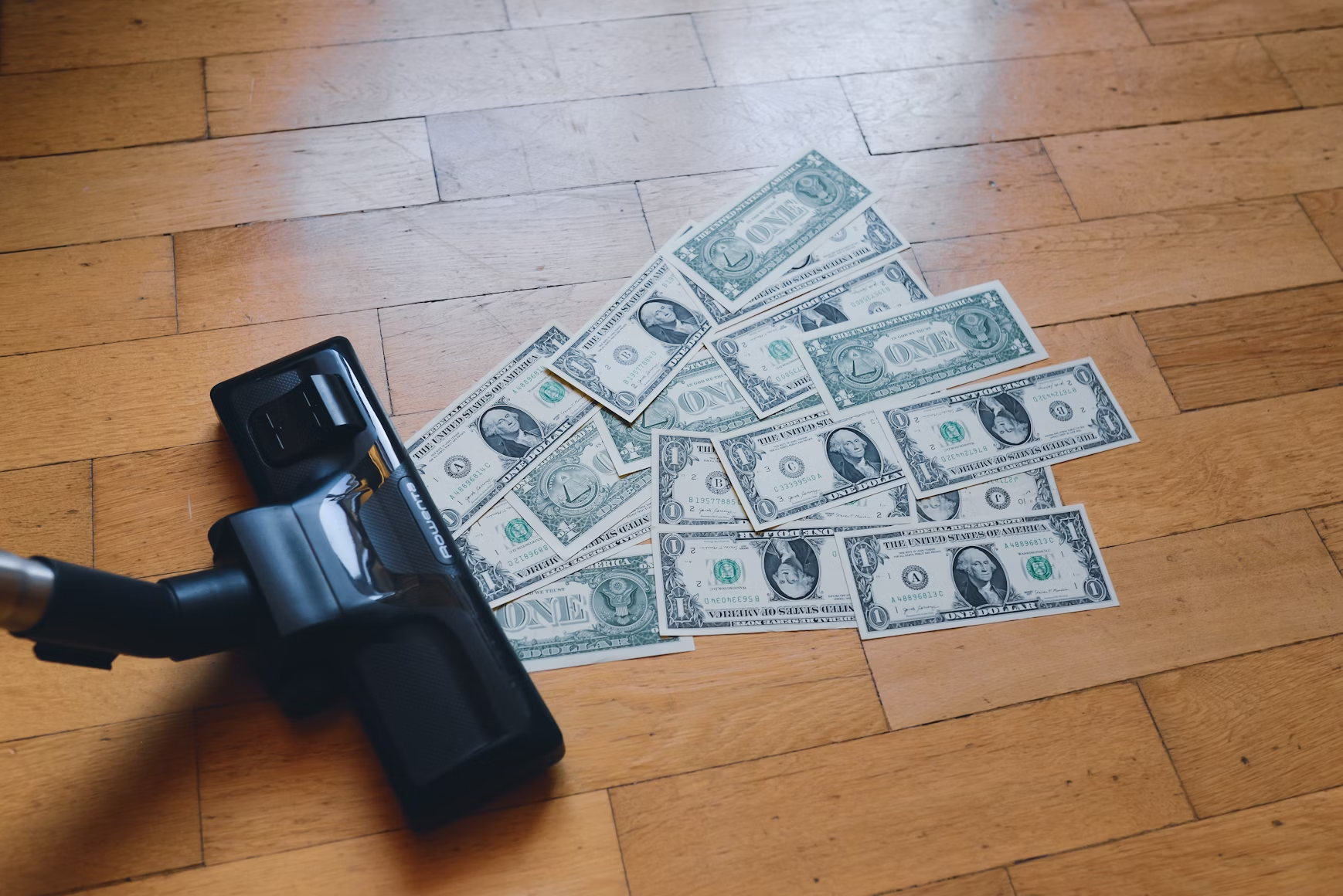
Yusuf Shurbaji
June 2, 2023
|
8
min read
As a small business owner, you might already know how much money you roughly bring in each month or how many customers you have. But metrics like revenue and customer account don't really tell you how much money you can expect to earn for each newly converted customer from your target audience.
To understand that, you need to know the average order value or AOV for your online business. Let’s break down average order value and look at some ways to improve this metric.

Put simply, average order value is the average dollar amount a customer spends at your store, whether it’s a retail location or an ecommerce shop. AOV includes the average amount of money a customer spends when they purchase something, subscribe to a service, or otherwise transfer money to your business’s bank account.
AOV is important primarily because it helps you determine how effective (and cost-effective, more specifically) your marketing efforts and pricing strategy are.
When you know how much the average customer spends on your brand, you can determine:
Think of AOV as a benchmark of customer behavior. Once you know the average order value of your customers, you’ll be able to set even better goals and strategies and make overall more effective business decisions.
As an example, if your AOV is relatively low, you can improve it by:
In many cases, it’s wiser to focus on increasing average order value as opposed to increasing the number of customers your brand sees each month. It usually takes more money to increase your marketing such that you acquire a certain number of new customers. In comparison, increasing AOV is relatively affordable and cost-effective.
You can calculate AOV with a straightforward formula displayed below:
The revenue is the total amount of money you receive from your customers in a certain timeframe. Divide that by the number of orders in the same timeframe, and you'll get your AOV. Let's look at an example.
Say that in July, your e-commerce shop had $35,000 in revenue. You had a total of 700 orders.
Plug those numbers into the formula to get the AOV:
In other words, the average customer spent $50 at your store for the month of July. Depending on your other metrics in your overall profitability, you can focus on increasing the AOV or be satisfied with where it’s currently hovering.

You can increase your average order value by practicing a few different strategies. Use these strategies in conjunction with each other to maximize your AOV increase for your ecommerce business.
Cross-selling and upselling are popular means to increase average order value and for good reason. Once a customer has decided to buy something from your store, they’re more likely to be convinced to spend a little extra money for more value.
For example, if a customer purchases one item at your store – like special footwear – you can design your site to suggest complementary items for the initial purchase, such as leggings.
Cross-selling and upselling can greatly increase both AOV and the overall revenue your brand takes in. Plus, you’ll also increase customer lifetime value — another of the most important metrics or KPIs to track.
Another good way to increase the AOV you see on your site is to offer consumer financing methods. Consumer financing requires partnering with a third party, like PayPal Pay in 4, Afterpay, Affirm, and more, to offer financing arrangements to your customers.
Consumer financing can be highly beneficial for high-value, expensive items that many customers may be unable to afford outright, like furniture, luxury apparel, or electronics. By offering consumer financing, you’ll make it easier for customers to spend money at your store, increasing the AOV in the process.
Make sure you partner with consumer financing brands that offer reasonable interest rates, low fees, and other perks and benefits to attract as many prospective customers to use those financing deals as possible.
One of the most effective means to increase AOV for e-commerce sites is to create a minimum price threshold for free shipping. Online shoppers love free shipping more than any other perk, but they also understand that it costs businesses significantly to offer it.
You can meet your customers in the middle by mandating an order minimum of $30, $50, and so on. You might be surprised how many customers are willing to put a few additional products in their shopping carts just to meet a free shipping threshold. This trick may also increase your total number of orders and profit margin.
Above, we mentioned how cross-selling and upselling complementary products is an excellent way to increase average order value. You can double down on that idea by offering bundles and discounts for complementary products.
Say that you sell electronics at your online store. If an electronic device is $500, and a case for that device is $75, you can bundle both products together for $525. This is a good way to get customers to make more purchases at your store and increase the average order value at the same time. Customers might be willing to spend a little extra money to snag a great deal even if they didn’t intend to spend that much when they initially visited your shop.

Naturally, regular sales and discounts are key, effective tools you can and should leverage to increase AOV over time. Regular sales and discounts drive traffic to your online store, bringing new and former customers back to your shop.
Those sales and discounts should be strategically levied across different products and services. For example, if you’re trying to clear out inventory of one type of product, offer a special sale or discount for that product until you sell them all.
This is an excellent way to increase customer satisfaction, as shoppers love to feel like they are getting good deals. Your AOV will also increase as you drive more and more distinct or separate purchases among more unique customers.
Keep in mind that discounting depends on your brand positioning — it won’t always be a realistic option. If you’re running a luxury brand, for example, it won’t make sense to rely on discounting to increase your AOV. Your products are priced high for a reason, and providing discounts won’t be in line with your overall brand strategy.
Instead, consider combining several of the other options on this list to drive up your AOV in a way that aligns with the brand you’ve built.
Some of your most profitable clients and accounts will want what you have — and a lot of it. You can treat those customers right and increase your average order value simultaneously by offering bulk product options.
When your customers purchase your products in bulk, you should offer them a volume discount such that they save money as opposed to buying all those items individually. You can come up with a good price point that ensures you still make a profit while also satisfying your customers so they come back for future purchases later down the road.

Loyalty programs are some of the most effective ways to build a long-term, loyal customer base. When you offer longtime shoppers or repeat customers loyalty points, perks, and other benefits, you make them more likely to return to your store and recommend your brand to others – an invaluable benefit for your marketing efforts.
Loyalty programs also increase your AOV because customers are more likely to shop at brands where they are members or rewarded for their loyalty, even if a competitor has slightly lower prices. For example, if you reward your members with free shipping, they'll likely choose your products over another brand.
Alternatively, allow your repeat customers to build up points and perks with each purchase. Those customers will return and keep making purchases until they unlock special bonuses or benefits. Thanks to higher customer loyalty and better customer retention, you might be able to reduce your ad spend, too.
Last but not least, don’t forget to show customers personalized product recommendations. These days, people don’t like to feel impersonally marketed to – they want to feel like they are seen as unique individuals.
You can do that with your online marketing and your product recommendations when someone visits your ecommerce store. Personalize those product recommendations, and new site visitors will be more likely to make initial purchases. They’ll feel like you offer exactly what they need and know what they like.
Once they’re satisfied with that initial purchase, those same customers are likely to return — and you can keep this positive feedback loop going by personalizing offers, discounts, and special bonuses via email marketing.
In this way, you can combine the above best practices to offer a holistic, satisfactory, and overall memorable shopping experience for every prospect and customer.
Average order value can tell you a lot about how much money the average converted customer brings to your business. With this information, you can adjust and optimize your marketing and website pages for even better ROI.
Even better, you don’t have to do all this alone. Prismfly can help in more ways than one, such as by focusing on conversion rate optimization, UX or UI design, and much more. Contact us today, and let’s get started.

Yusuf Shurbaji
Co-Founder & Managing Partner
Yusuf Shurbaji has over a decade of ecommerce growth experience. His past work includes building optimization departments & running experimentation inhouse and agency side for Dior, JCPenney, LVMH, American Precious Metals Exchange, Princess Polly, Built Brands, Ladder Sport, Maze Group, HelloFresh, Ledger, Blockchain.com, Kind Snacks, and other 9-figure brands. Yusuf is a Co-Founder of Prismfly, a conversion rate optimization agency focused on growing revenue and EBITDA for D2C ecommerce brands. Prismfly is the first CRO focused Shopify Plus certified agency and has seen triple digit growth the past 2 years.
Yusuf Shurbaji





